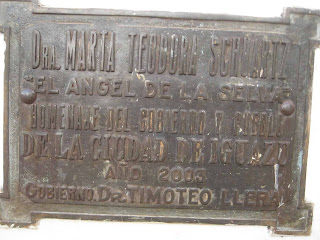The first is at a hummingbird ‘park’. It’s really the backyard of an Iguazú family and has been operating for 40 years. There are lots of feeders and birds besides hummingbirds show up. We went there at the end of our birdwatching Tuesday morning. More on this later, but I wanted to share this picture that has the hummingbird’s tongue.
At first.I thought it was the sugar water coming out, but Fernando said it was the tong ue.
The local indigenous people are the Guarani. I can’t find anything in English on Guarani in Iguazú so here is something in Spanish (use Google Translate if you need to). I’m not sure how sensitive this account is, so read with cutural alerts turned on.
This says (very loosely) it’s a community for growing small gardens for women who want to be entrepreneurial.
This sign, I’m told, is an advertising for ca rds and tarot readings and other ‘black magic’ to help find jobs, mates, and anything you need.
My wife noted that she hadn’t seen any statues of women and then I saw this bust of Dr. Marta Teodora Schwartz, “the angel of the forest.” Again, it’s in Spanish, but I don’t have time to get a translation for you. Google translate is very easy to use, just cut and paste, and it’s really pretty good translations.
And here’s a church nearby named after Señora [I’ll add this in when I get more time].
And at this point you can see Brazil across the river to the right, Paraguay across the other river to the left, and a bit of Argentina from where I’m taking the picture - Tres Fronteras.
And one last mural. I have no idea what it means.
















































